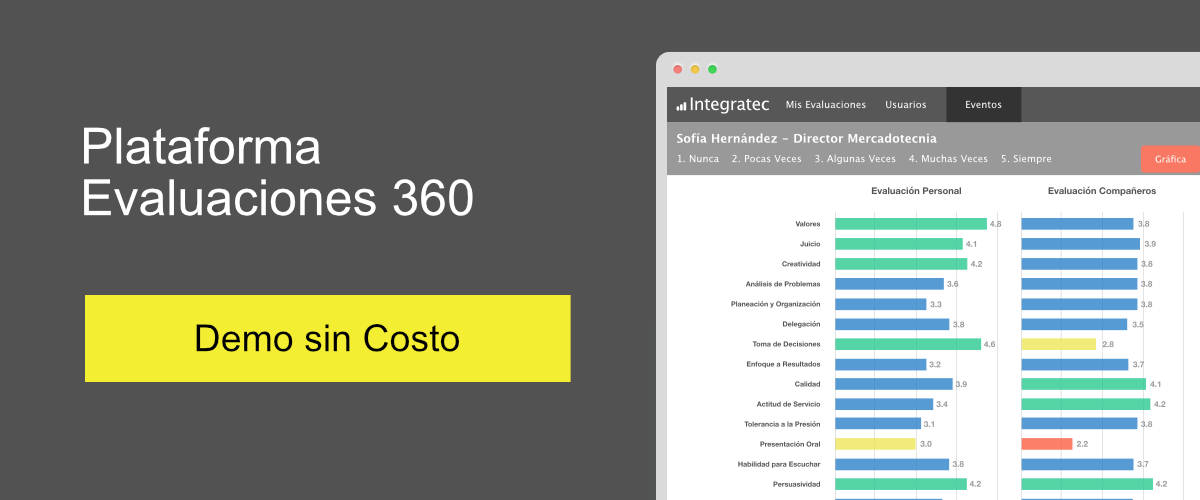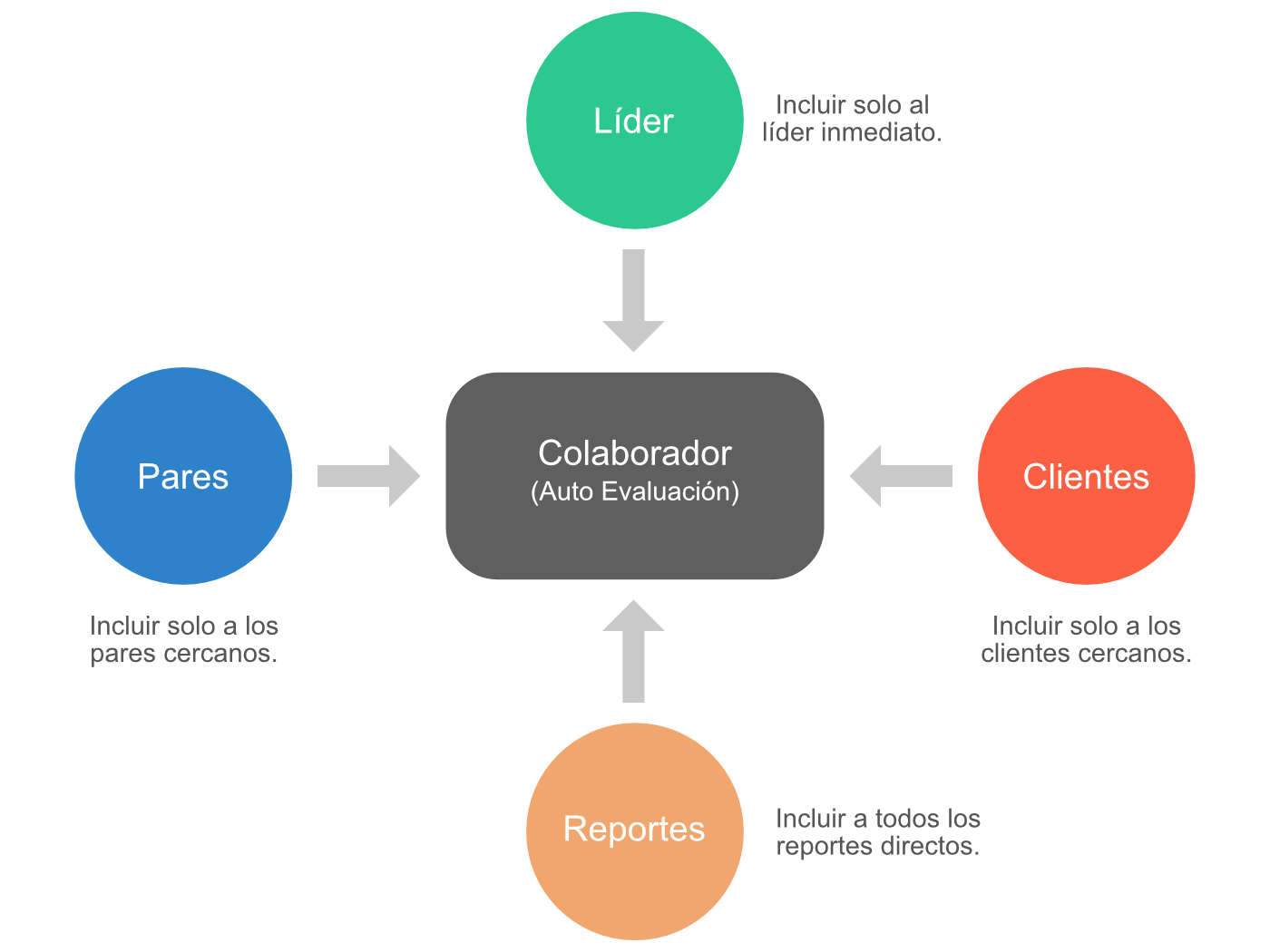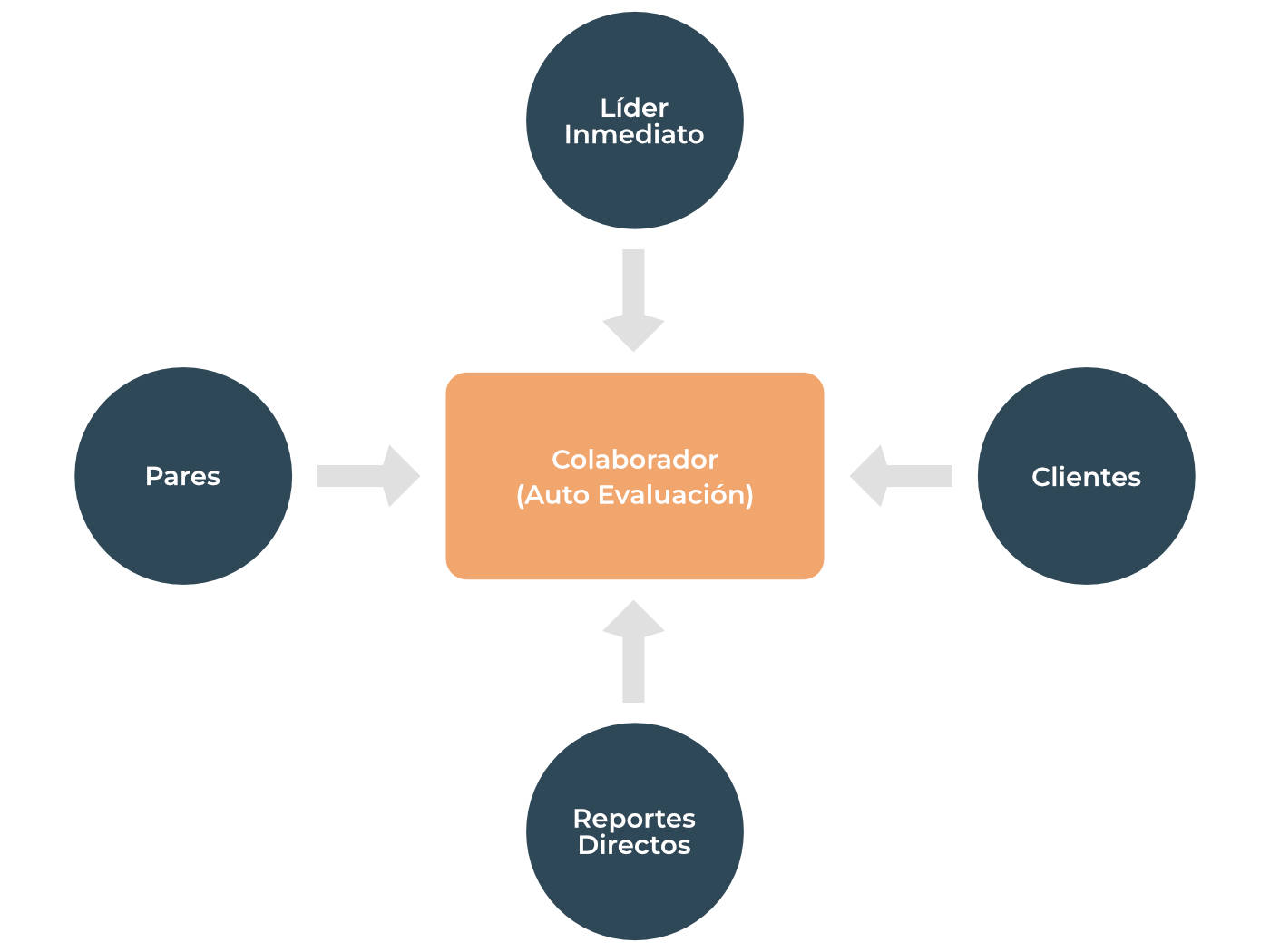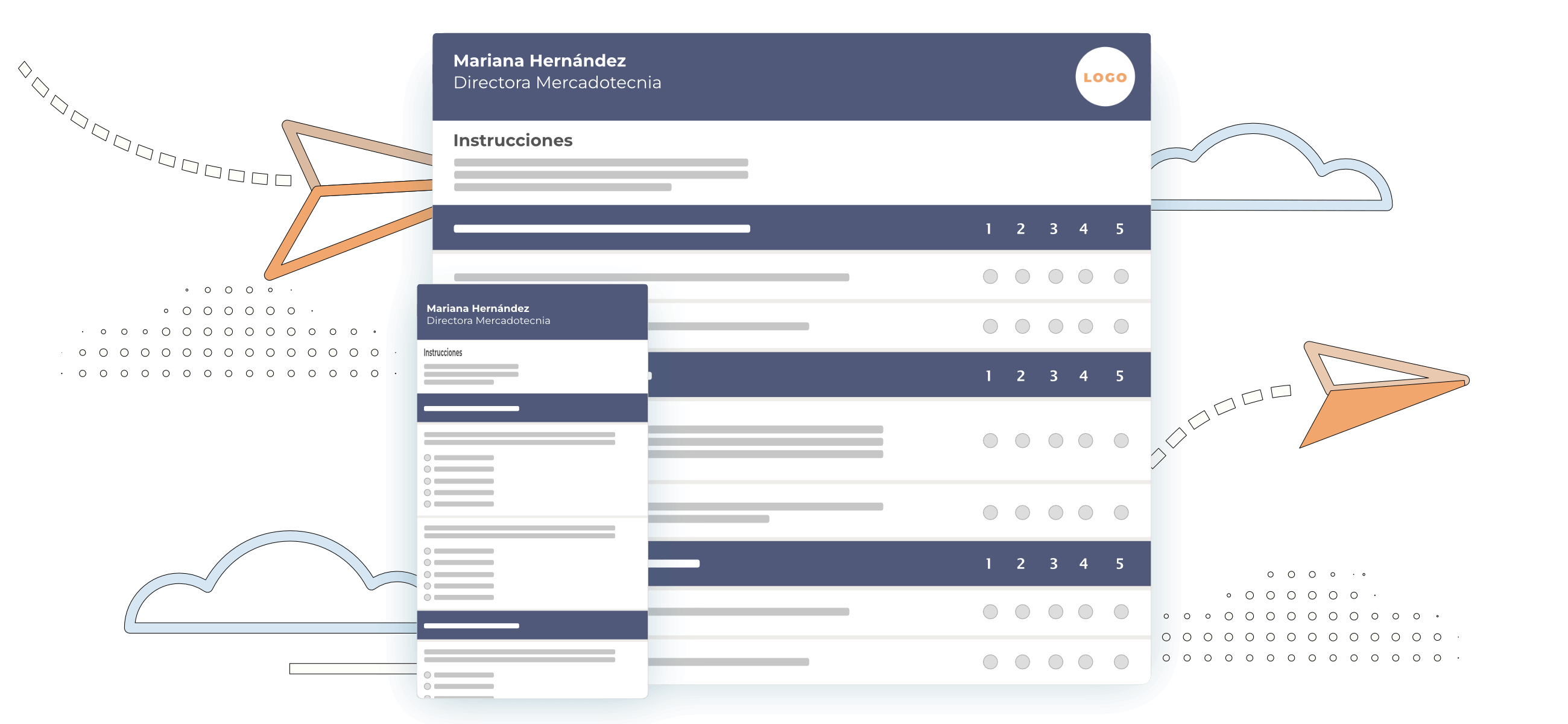Thousands of 360 Degree Assessments implemented have given us a very broad overview of all the advantages they offer and the best practices for creating and applying them.
With this guide our intention is to support all the Human Resources departments in creating, applying and analyzing their own 360 degree evaluation to increase the development and performance of all their collaborators.
Table of Contents
- What is a 360 Degree Feedback Review?
- What do they evaluate?
- Do they serve to evaluate performance?
- Selection of participants
- Determine the feedback network
- Write the evaluation questions
- Establish the level of confidentiality for feedback
- Give feedback
- Follow up

1. What is a 360 Degree Feedback Review?
A 360 Degree Feedback review is all of the feedback on individual skills that employees receive from their work colleagues, which helps to identify their strengths and opportunities for improvement.
It is called 360º because it includes the self-evaluation of the person being evaluated and the evaluations of their work colleagues, including the Direct Manager, Peers, Direct Reports and Internal Clients.

If we look at the previous image, we can see that 360º feedback is very different to a performance evaluation; more colleagues participate, as well as the Direct Manager. This is what makes 360º feedback a very enriching experience.
2. What do they evaluate?
In contrast to annual performance evaluations, which grade employees on their work responsibilities, 360 degree feedback focuses on the personal qualities that are fundamental for these responsibilities.
These qualities are known as Skills and some of the main ones are:
- Leadership. Delegation, Responsibility, Motivation, Decision-making, Risk-taking, Approachability.
- Personal Values. Respect, Ability to Work under Pressure, Empathy, Physical Presentation.
- Team Work. Participation, Feedback, Accepting Differences, Negotiation.
- Communication. Verbal Communication, Understanding Ideas, Listening Skills.
- Creativity. Problem-solving, Innovation.
- Organization. Note-taking, Meeting Deadlines.
- Organizational Values. Alignment to Vision and Mission, Company Loyalty.
3. Do they serve to evaluate employee performance?
Sure! But up to a point. A 360 evaluation is not designed to evaluate the fulfillment of a collaborator's objectives. It is not appropriate for direct reports, clients or collaterals to evaluate our results, that is the function of the direct boss.
However, they can assess performance in terms of their technical and professional skills.
The competencies seen in the previous point are specifically aimed at personal competences, but other types of competencies more relevant to employee performance could well be managed:
In other words, a 360-degree evaluation can be a key trigger to increase the performance and productivity of all collaborators.
4. Selection of participants.
As 360 degree feedback evaluates individual skills, it’s as suitable for executive and managerial levels as it is for operative levels.
If the cost of implementation and time were not a limitation, the best option would be to include all members of the organization. But, in practice, this is rarely possible.
If you need to cut back on participants, it’s important to take care that the employee groups who don’t participate do not feel excluded. A good way to ensure this does not happen is to include all employees from each of the following groups:
Who shouldn’t be included?
It’s not easy to give or receive feedback, and it’s even more complicated for a new employee. It is best that participants have been with the organization for at least 6 months.
5. Determine the feedback network.
Having selected those who will participate, the next step in creating a 360º evaluation is to determine the Feedback Network.

This involves selecting who will evaluate each of the participants selected in the first step.
6. Write the evaluation questions.
This is probably the most important step in a 360º evaluation and the one that can most affect the results you obtain.
Using well-written and well-analyzed questions guarantees the success of the evaluation. On the other hand, even small changes to the questions could completely alter the results.
- Instead of asking "Does he know how to work in a team?", it is better to ask a more specific question like "Does he actively support and involve the members of his group in order to work together?" or "Does he create an environment of collaboration and trust in his work group?".
7. Establish the level of confidentiality for feedback.
Confidentiality is one of the most delicate issues in 360 degree feedback. Should feedback be anonymous? Completely open? Somewhere in between?
In a first time evaluation, it is recommended that evaluations are anonymous and that the employee only has access to the averages of the evaluations given by their colleagues. As the organization grows, you can start following more open feedback processes.
8. Give feedback
Feedback is the final objective of all 360 degree feedback surveys and it is very important to give it in the best possible way in order to ensure you obtain good results. The following are the main points to attend to:
- 1. Wait until everyone has finished.
- Feedback should preferably be given once the entire organization has finished filling out the evaluations. This is why it’s important to keep checking in with and supporting the participants.
- 2. Identify strengths, areas for improvement and blind spots.
- The report should include the employee’s strengths (areas where they received the best evaluation from their colleagues), areas for improvement (areas where colleagues say the employee has a lot of room to improve) and blind spots (areas where the employee and their colleagues see very differently).
- 3. Generate graphs.
- The more visual the feedback from the results of the 360 degree evaluation, the more easily employees will receive and understand their results. These graphs should show the three areas identified in the previous point.
- 4. Give direct feedback to each employee.
- Whether a manager from the Human Resources department does it, or the direct manager of each person evaluated, it is best that everyone receive their results in a one- on-one meeting where the employee can resolve any doubts and be offered a guide for constructing their development plan.
9. Follow Up
Implementing a 360 degree feedback survey should not be a one-time event in the organization, but a continuous development program. Make the most of the entire year to continue improving processes and monitor your employees’ development.

